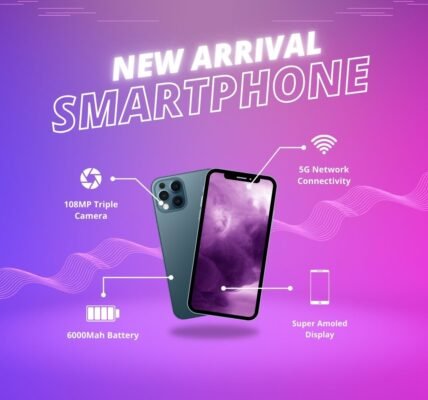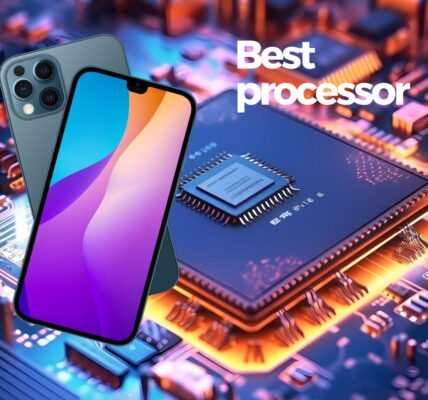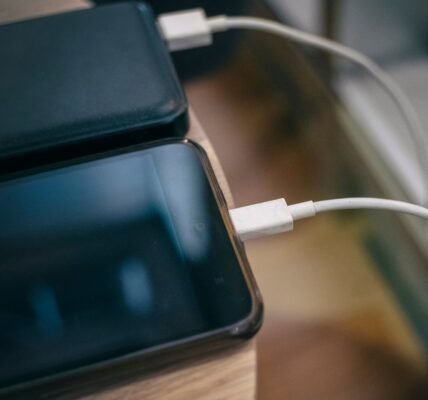In the past decade, smartphone cameras have evolved dramatically, transforming the way we capture and share moments. Gone are the days when you had to rely on bulky DSLRs or dedicated cameras to achieve professional-quality images. Today, leading smartphones are equipped with cutting-edge camera technology that not only meets but often exceeds user expectations. In this blog, we will explore how today’s phones are raising the bar in mobile photography, examining key advancements in camera technology and their implications for consumers and photographers alike.New Camera Tech in Smartphones

1. The Rise of Multi-Camera Systems
One of the most significant trends in smartphone camera technology is the integration of multiple camera lenses. This multi-camera approach allows manufacturers to offer a wider range of photographic options, enhancing versatility and image quality.New Camera Tech in Smartphones
a. Versatile Lens Options:
Smartphones now often feature a combination of standard, wide-angle, telephoto, and macro lenses. For example, the latest flagship models from brands like Apple, Samsung, and Google boast three or more lenses that enable users to easily switch between perspectives. This versatility means that you can capture stunning landscapes, detailed close-ups, or breathtaking portraits with a single device.
b. Improved Image Quality:
The benefits of multi-camera systems go beyond just versatility. By combining the strengths of different lenses, smartphones can achieve superior image quality. For instance, when shooting in low light, some devices leverage data from multiple lenses to create brighter, clearer images. This technology minimizes noise and enhances detail, making it easier to capture high-quality photos in challenging conditions.
2. Advanced Sensor Technology
The sensors used in smartphone cameras are also experiencing rapid advancements, significantly impacting image quality and performance.New Camera Tech in Smartphones
New Camera Tech in Smartphones
a. Larger Sensor Sizes:
Manufacturers are increasingly incorporating larger image sensors in their smartphones. A larger sensor can capture more light, resulting in better performance in low-light environments. This is particularly crucial for night photography, where traditional smaller sensors struggle to deliver acceptable results. Phones like the Google Pixel 7 and the iPhone 14 have showcased this technology, producing stunning images even in dimly lit conditions.
b. Higher Megapixel Counts:
While higher megapixel counts do not always equate to better image quality, they allow for more detail and the possibility of cropping without losing clarity. Many flagship smartphones now boast 108MP sensors, enabling users to capture intricate details and produce large prints. This trend emphasizes the importance of resolution, especially for photography enthusiasts who demand the best quality possible.
3. Artificial Intelligence and Computational Photography
One of the most revolutionary advancements in smartphone camera technology is the integration of artificial intelligence (AI) and computational photography.New Camera Tech in Smartphones
a. AI-Enhanced Features:
AI is transforming the way we take photos by automating several aspects of the photography process. Features like scene recognition, image stabilization, and portrait mode have been greatly improved through AI algorithms. For instance, AI can automatically adjust exposure, focus, and white balance to optimize images based on the scene, ensuring that users get the best possible shot with minimal effort.
b. Computational Photography Techniques:
Smartphones are now equipped with computational photography techniques that enhance images beyond what traditional cameras can achieve. Techniques such as HDR (High Dynamic Range), Night Mode, and portrait lighting rely on complex algorithms to combine multiple exposures and create images that are more vivid and lifelike. The ability to capture stunning shots in challenging lighting conditions has made smartphones the go-to choice for many photographers.
4. Enhanced Video Capabilities
As video content continues to dominate social media and digital platforms, smartphone manufacturers are prioritizing video recording capabilities, leading to remarkable advancements in this area.
a. 4K and 8K Video Recording:
Many modern smartphones support 4K and even 8K video recording, allowing users to capture high-resolution footage that rivals professional cameras. This is especially beneficial for content creators and vloggers who need quality visuals for their projects. Additionally, features like slow motion and time-lapse allow for creative storytelling and dynamic content creation.
b. Pro-Level Video Features:
In response to the increasing demand for high-quality video content, smartphones are now equipped with professional-grade features such as advanced stabilization, multiple frame rates, and cinematic modes. These tools enable users to create visually stunning videos with ease, making smartphones a viable option for budding filmmakers.
5. Innovative Software Enhancements
In addition to hardware advancements, software improvements play a critical role in the evolution of smartphone camera technology.
a. Real-Time Editing and Filters:
Modern smartphones come equipped with sophisticated editing software that allows users to apply filters, adjust lighting, and enhance images directly on their devices. Features like real-time previews and advanced editing tools enable users to experiment creatively without the need for additional software.
b. Cloud Integration and Backup:
Cloud storage solutions also enhance the smartphone photography experience by allowing users to back up their photos automatically. This ensures that precious memories are safe and easily accessible from multiple devices. Many smartphones now offer seamless integration with cloud services, making it easier to manage and share your photo library.
6. User-Centric Design and Accessibility
As smartphone technology advances, manufacturers are increasingly focused on creating user-friendly interfaces that cater to both amateur and professional photographers.
a. Intuitive Camera Apps:
Today’s smartphone camera apps are designed to be intuitive and easy to navigate. With simplified controls and guided modes, even novice users can take stunning photos without extensive knowledge of photography. This accessibility empowers more people to explore their creativity and share their work.
b. Customization Options:
For photography enthusiasts who crave more control, many smartphones offer manual modes that allow users to adjust settings like ISO, shutter speed, and focus. This combination of user-friendly features and advanced controls ensures that all users can find their ideal shooting experience.
Conclusion
As we look ahead to the future of mobile photography, it is clear that smartphone cameras are continually raising the bar. With innovations in multi-camera systems, sensor technology, AI-driven features, enhanced video capabilities, and user-friendly software, today’s smartphones are empowering users to capture and create stunning visual content. Whether you are a casual user, a social media influencer, or an aspiring photographer, the advancements in camera technology ensure that your smartphone is an indispensable tool for capturing life’s moments.
As technology continues to evolve, it will be exciting to see what the future holds for smartphone photography. With each new release, manufacturers are challenging the status quo and redefining what is possible in the palm of our hands. The next time you pull out your smartphone to take a picture, remember that you’re using a powerful piece of technology that brings the art of photography within reach for everyone.





